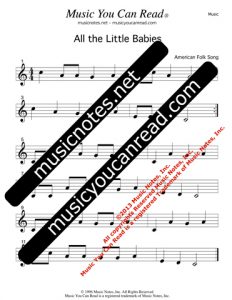 Music Only
Music Only
The Music Only Format will test students reading abilities or, as a starting point for advanced readers. Also used at instrument centers for transferring vocal skills to instruments, i.e.; recorder, xylophone, tone bells, and other C Major instruments which build fine motor skills. Ninety percent of the Music Only Format is in the key of C Major for this purpose. After a particular format is read, switching to the Music Only Format concentrates the visual field on the music and forces the learner to look at the music,(not the answers). As a class lesson or center/station activity, Music Only Formats are excellent worksheets to assess your student’s knowledge of beat divisions, rhythms, and pitches.
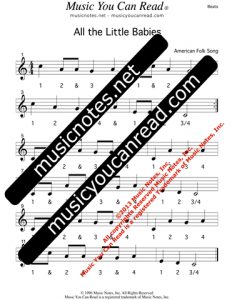 Beats Divisions
Beats Divisions
The Beat Format introduces the learner to the divisions of sound and silence within the song. Returning to the Beat Format once the pitches are mastered is very useful in singing or chanting pitches to the beat divisions, a technique used by many middle and high school music programs, and first introduced to our founder, while in high school (1973), by Robert Shaw during an All-State rehearsal.
“We owe it to the composer that pitches start and end in their allotted time.”
Robert Shaw,
Spivey Hall – Master Lessons
Clayton State University
Morrow, Georgia, 1996.
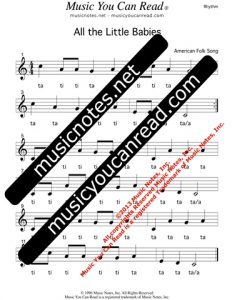 Rhythms
Rhythms
The Rhythm Format uses the traditional ti’s and ta’s to illustrate and hear patterns within the beat divisions. Rhythms are often easier to read, starting with the Rhythm Format in such cases will bring success! For more complex patterns, the Beat Format is your best starting point. Always follow the Rhythm Format with the Music Only Format to demonstrate and practice reading without the answered text! True ownership of the process comes when the students ask for the Music Only Format FIRST!
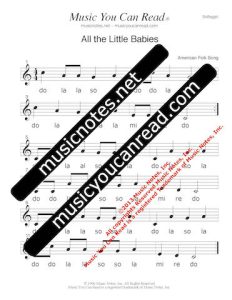 Solfeggio
Solfeggio
Solfeggio Format builds on the information mastered while reading the beats and rhythm formats. Adding two syllable words to a known rhythm can be accomplished successfully by all reading levels. Chant the pitch names to the rhythm before singing the pitches. Quite often pitch patterns differ from rhythm patterns.
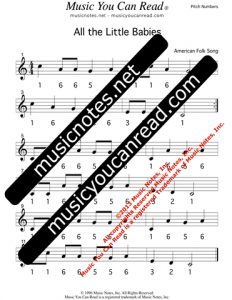 Pitch Numbers
Pitch Numbers
Kindergarten will find learning Pitch Numbers easier as numbers are mastered before two letter words. Whether using Solfeggio or Pitch Numbers first, ALWAYS follow with a quick reading of the alternate method. The extra practice will be rewarded, the added concept will bring confidence in the musician!
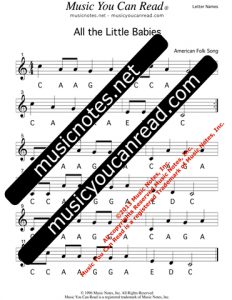 Pitch Letter Names
Pitch Letter Names
Ninety percent (90%) of the Letter Names format are in the key of C Major. After a tune or song is known students use the Letter Names format to transfer vocal reading skills to an instrument. It is best suited for instrument centers.
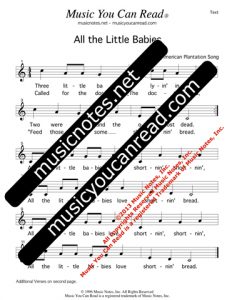 Text/Lyrics
Text/Lyrics
After students learn to follow notes they are successful in following words and word syllables in the same rhythm and increase thier ontask reading behavior. Think of the Text Format as a reward for reading the previous formats.